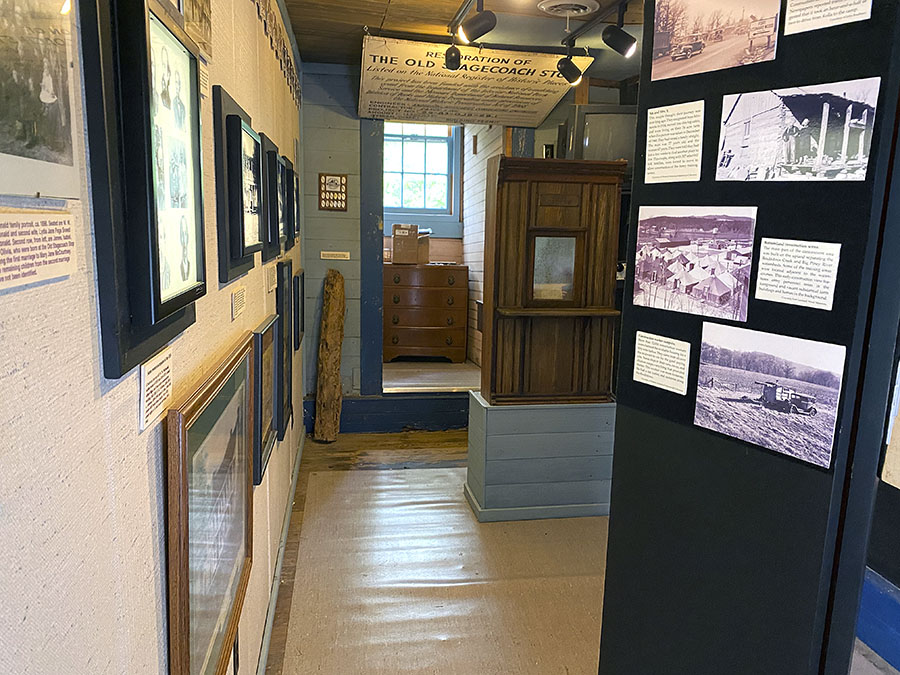
Instead of being a restoration of the third apartment, this narrow room presents some of the events and artifacts pertaining to the restoration of the building, as well as a panel at right of local history.
Restoration Gallery |
Instead of being a restoration of the third apartment, this narrow room presents some of the events and artifacts pertaining to the restoration of the building, as well as a panel at right of local history. |
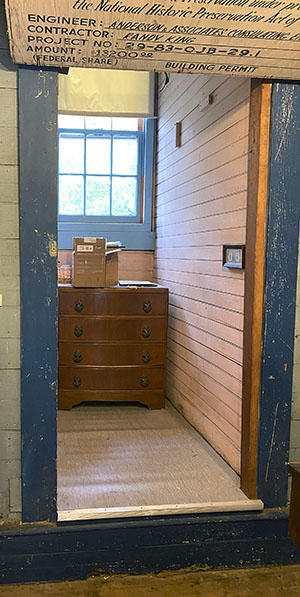 |
A dormer was built out over the lean-to shed roof in this room, as in the kitchen, to provide closet space. A small dresser sits at the rear of dormer. At right are two 19th century wall boards. The one at right was in the McDonald Cabin and was its earliest wall covering. The walls were paneled with six-inch walnut boards that were whitewashed to brighten the cabin. The ten-inch pine board on the left was in the post office corner of the Tavern. It is covered with a green floral pattern with a white background that was popular circa 1880. The interesting thing about this wallpaper is the process for making the color called Paris Green. The green pigment was achieved by mixing copper with highly toxic arsenic trioxide. Notice that the wallpaper-eating insects (probably roaches) ate the white paper background but learned that if they ate the green paper, it would be their last meal. Paris Green was used as a pigment in paint and wallpaper and, not surprisingly, used as a rodenticide and insecticide. |
| Several rooms had wallcovering of flattened cardboard boxes. The building had no insulation and the boards had gaps, resulting in the wind whistling through the walls. Part of the cardboard use was to decrease the drafts. It was also used to smooth the rough and grooved beadboard for wallpaper. At right is a piece of cardboard that was on the wall and painted a pale blue. Next to the painted cardboard are two pieces of linoleum that were on the floor in the Restoration Gallery. There are also examples of wooden shingles, can lids that had been nailed over pack rat holes, among other artifacts of the structure. | 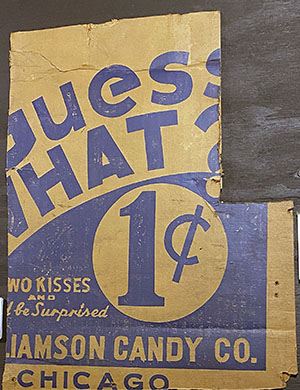 |
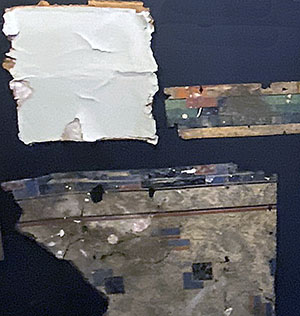 |
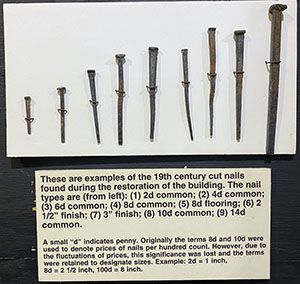 |
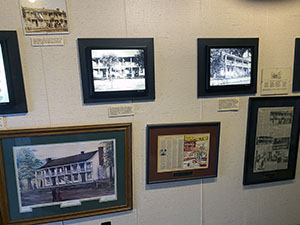 |
At far left are examples of the 19th century cut (square) nails pulled from boards during the restoration. The range in size from 2d (1 inch) to 14d (6 inches). We filled several coffee cans with old nails. Near left is a portion of the north wall lined with pictures and illuminated frames of the building at various times. It also displays our 1995 Hometown Pride Award for Preservation from Midwest Living Magazine. |
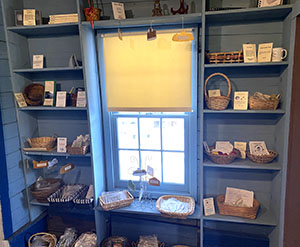 |
On the west wall is our modest gift shop called the Waystation. All of the souvenirs are connected in some way to the history of the Old Stagecoach Stop. |
| Map |